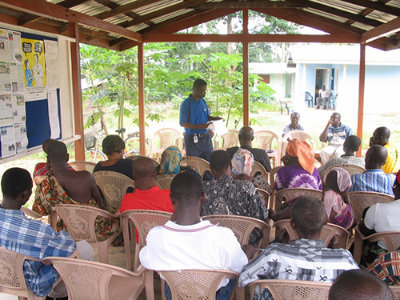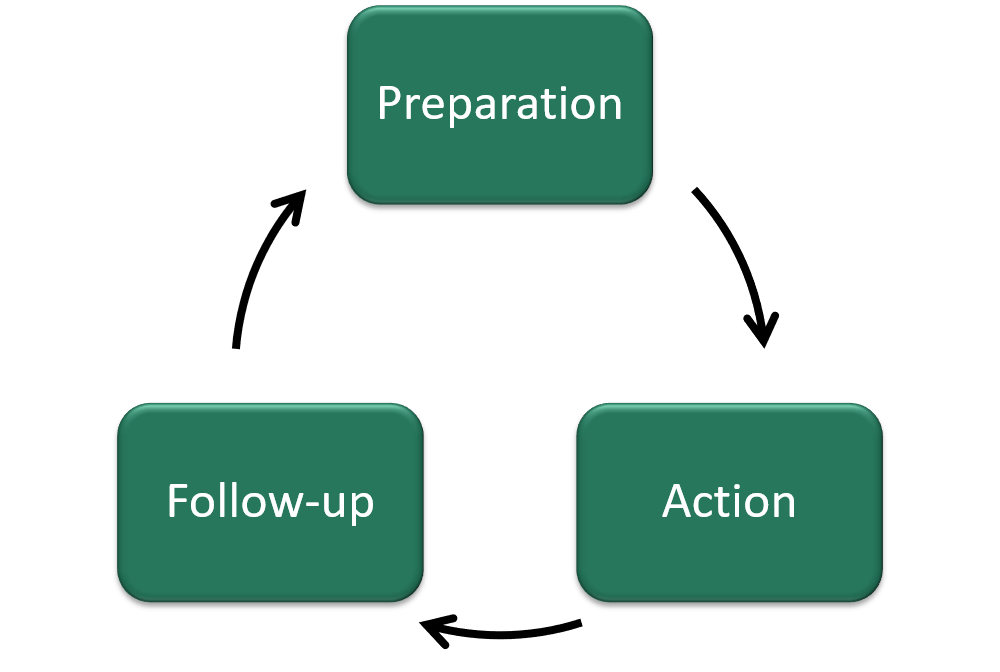- Smart Social Reporting (to external stakeholders)
-

Reporting the social aspects that matter up to management, back to the team or out to regulators and community stakeholders is often seen as a nuisance whereas taking a systematic approach and clearly identifying what information needs to be shared and for what reason makes reporting a useful tool for keeping everyone informed. The aim needs to be making reporting as easy as possible.
Smart Reporting reuses the same information as much as possible. The number of local jobs and contracts, dollars spent, community concerns raised and addressed, quantity and quality of engagement is what most people are interested in seeing. Smart Reporting is often simply a case of presenting differently for each audience.
- Smart Social Reporting (inside the company)
-

Reporting the social aspects that matter up to management, back to the team or out to regulators and community stakeholders is often seen as a nuisance whereas taking a systematic approach and clearly identifying what information needs to be shared and for what reason makes reporting a useful tool to keep everyone informed. The aim needs to be making reporting as easy as possible.
Smart Reporting reuses the same information as much as possible. The number of local jobs and contracts, dollars spent, community concerns raised and addressed, quantity and quality of engagement is what most people are interested in seeing. Smart Reporting is often simply a case of presenting differently for each audience.
- Feeling the pulse: Your relationships health check
-

We know that the level of social risk associated with a project is linked to the quality of relationships with local people, governments and critics but how can you know where you stand? There are two simple ways to do this. The first is to pay attention for changes in the tone of meetings with government agencies, partners and community members. The second is to note changes in behaviour and attitude you see happening in the community...
- Making the most of your first site visit
-

If you're working on an overseas project and have never visited the site you'll be well served to make some pre-departure arrangements ahead of your first visit so that you can tick off the actions on your "what do I need to get out of my first visit checklist". The more advice, views and ideas you can gather early on the better informed you’ll be and the less likely it is that you'll make costly mistakes. I've "been there done that" and believe me, it is not a good place to be.
- Leaving early
-

Living with uncertainty is part and parcel of exploration and project development but this doesn’t mean that you can’t plan. The uncertainty is with the outcome of each phase, it is not with the project management process, where one well defined step follows another. For the most part, when decisions are made they follow a pattern – a round of drilling is completed, results are assessed and are used to inform a go / no go decision for the next step. Likewise, there is a conscious decision to start a scoping study, to progress to a feasibility study or to put a project on the shelf...
- Tapping into local knowledge
-

This short piece highlights a few simple actions you can take that will reduce your community-related project risk.
My suggestion is that whether you are taking on an existing project or you’ve acquired it through a purchase or takeover, the simple act of talking to your in-country site team can save you a lot of grief. If they are on-the-ball they will be a good source of information to help you get up to speed…
- More actions for a stronger social licence
-

I've written before about ten must-do-actions for a stronger social licence. These come from personal experience working in company-community relations on mine sites in Africa. This new/different/alternative take on doing what matters comes from local communities, reflecting directly on their concerns for the well-being and development opportunities for individuals and the collective community...
- Actions for a stronger social licence
-

Check-out the one-minute video before looking deeper into the need-to-do-actions to demonstrate the behaviour needed to establish trust and build relationships. Without trust and good relationships the likelihood of success (for the business generally and for community-facing activities in particular) is greatly reduced...
- Mining and Social Licence
-

Social Licence to Operate is a mining industry concept. The expression was first used by Canadian Jim Cooney in 1997. This was a decade after the landmark 1987 Brundtland Report and a few years after the concept of the triple-bottom-line was first described by John Elkington. Its use has now spread well beyond the mining industry and as has happened with triple-bottom-line and sustainable development, the term "social licence" has been interpreted and used in many ways. Licence to Operate is currently seen by many as one of the biggest risks to the mining and metals industry, just as it was back in the 1990’s when Jim Cooney coined the term...
- In the beginning...
-

My social licence journey began in 2005 when I went to Ghana as part of a team planning to build a new mine. I had been working on the studies and design work for the company's Ghana projects for five years so I was very familiar with the project but not particularly familiar with Ghana which I had visited only three times, two of those being very short project kick-off trips. I was also a complete community novice, with Ghana being my first overseas assignment so, perhaps not surprisingly, I made plenty of mistakes and I learned a lot. What follows is a bit of a look back on some of the processes we put in place and the results we saw in three important areas...
- Australian Wind Industry Community Engagement Guidelines
-
These guidelines provide a blueprint for wind farm operators to engage effectively with local communities. The approach shares many similarities with the resource sector and looks pretty handy, particularly the stakeholder id and mapping approach.
- IFC Stakeholder Engagement Good Practice Guide
-
A comprehensive, easy to read and easy to use resource. One of the early guides, it addresses the shift to a broader, more inclusive and continuous process of engagement between companies and stakeholders and reflects the increasing recognition of the business and reputation risks that come from poor stakeholder relations. Identified key attributes of good engagement include starting early, not waiting until there is a problem to engage, taking a long term view, tailoring the process to fit the project and managing engagement as you would any other part of the business.
- IFC Strategic Community Engagement for Juniors
-
Early Strategic Stakeholder Engagement (ESSE): A good plan with a well thought-through implementation process can ensure that initial stakeholder engagement provides a solid foundation for gaining and sustaining support of stakeholders, and in particular directly affected local communities, for every phase of project and operational life.
- PDAC First Engagement Field Guide
-
Many guides on community and stakeholder relations have been produced for extractive sector companies. The PDAC’s e3 Plus Framework for Responsible Exploration was the first resource designed for junior exploration companies, addressing their specific human resource, financial, and timeline challenges. More recently, additional resources like this one, have been created to support junior companies with their community engagement activities. This guide fills a gap by providing practical, step-by-step ideas that can be used at the site level.
Read the full guide online.
- Preventing Conflict in Exploration Tool and Toolkit
-
A practical, simple guide that sets out the important steps for using constructive engagement to prevent conflict during exploration.The toolkit is a simple, practical guide that sets out the important steps for using constructive engagement to prevent conflict through during exploration. The toolkit brings in ideas and experiences from the three collaborating partners - the Corporate Engagement Program Framework, PDAC’s e3Plus, and World Vision’s Making Sense of Turbulent Contexts and pulls in its content from a series of field tests with exploration companies as well as the input of many contributors and collaborators.
- William Ury: Getting Past No
-
William Ury, co-author of 'Getting to Yes', the go-to classic on negotiation walks through a five step process to use when the techniques for co-operative negotiation fail. Learn how you can:
- Stay cool under pressure
- Disarm angry adversaries and breakthrough resistance
- Stand up for yourself without provoking opposition
- Deal with underhanded and dirty tricks
- Find agreeable solutions
- Use power constructively to reach agreement
You can find (and buy) the book online.
- Zandvliet and Anderson: Getting It Right
-
This book has been written for corporate managers who are responsible for company operations in societies that are poor and politically unstable. Many such managers are frustrated with the situations they face. They try their best to run effective, profitable and beneficial operations that take account of the needs of all their stakeholders, including local surrounding communities. But, even with their best efforts, they encounter community dissatisfaction, unrest, opposition, and delays and, worse yet, threats and violence. Why does this happen?
I was fortunate to have the opportunity to work with Luc while I was feeling my way during my early days in Ghana and am forever thankful for the lesson (obvious with the benefit of hindsight) that resource development by default creates tension and conflict, and that it is how companies approach conflict – as an opportunity or as a threat – that shapes the ongoing relationship between company and community. Some of the ideas in the book have been particularly sticky:
- Relationships matter – at a personal and business level this seems a no-brainer but sometimes the connection seems to get lost when it comes to communities
- Company impacts are never neutral – they can be negative or positive but from the time a company starts work on-the-ground it starts to create change
- People everywhere get annoyed about the same issues – this one gave me a lot of comfort that I could be confident applying the ideas to my particular circumstances plus, the issues are not complicated – behaving appropriately, taking responsibility for impacts and fair distribution of benefits are the keys
- Relationships require ongoing effort – again not really earth-shattering news, so it is somewhat surprising how often it happens that over time we take things for granted and it takes a nasty wake-up call to show us how far we’ve gone off the rails
- Company actions shape the nature of relationships – this last one relates back to the third point, because the reality is that the three issues that most influence a relationship - impacts, benefits and behaviour – are all company-initiated actions, and it is totally within the company’s control to determine what it is going to do and how it is going to act
You can find (and buy) the book online.







